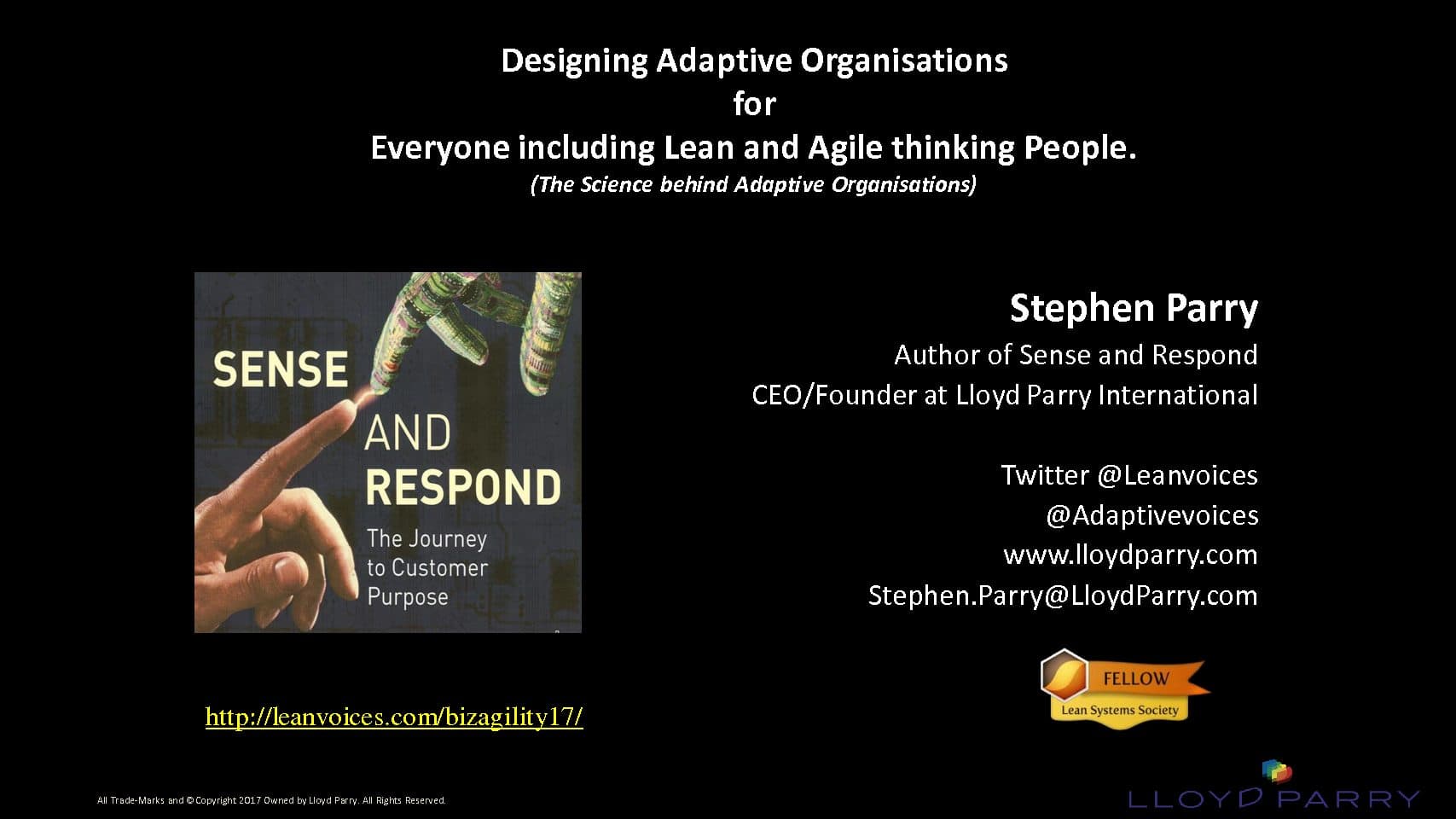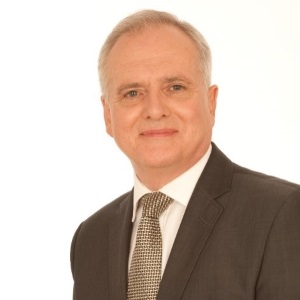Okay, I'm going to be brief on this talk today. I'm going to talk about something slightly different. All the other talks are pointing us in the same direction. I think we all have an understanding of what an adaptive agile organization would function like and how people would take responsibility. But the biggest problem I find is that we know point B, yet we don't always know point A. We actually know very little about where we are starting. Most people think they have a really good idea of point A, but I want to talk about why that might not be true.
Let me get into this. I'm pressing the button—good. As mentioned in the introduction, I worked for Fujitsu for a number of years. I was one of the first to introduce Lean into a large-scale IT organization. We created a very different type of organization, which is where the name "Sense and Respond" comes from, in terms of the book’s title. This was published in 2005. I left and started taking those ideas into the field, working with large organizations, mostly technology companies, trying to navigate the cloud enterprise—from application development to infrastructure management, and even retiring infrastructure.
I'm interested in managing that whole process in what I call an adaptive way. Ultimately, that's what Agile and Lean are trying to achieve—adaptability and rapid response to external changes.
You Get the Behavior You Design For
You get the behavior you design for—or, in some cases, fail to design for. Many people intuitively understand there is a link between organizational design, job roles, measurement systems, strategy, operating practices, and management. But what is the cause and effect? That’s what I want to explore.
Let’s break this down into the small pieces that will leverage your journey toward an adaptive organization. And let me say this up front: every journey is different. Why? Because point A is different in every organization. You cannot buy an off-the-shelf roadmap to agility. You cannot simply implement an agile adaptive organization—you can only grow one. You need to think like a gardener: what plants do you nurture, and what are the weeds?
Why Organizational Design Matters
Why should you care about the design of your organization? Because it directly impacts the quality of your working life and your ability to be prosperous over the long term. It's all about differentiation—staying ahead of the curve. Traditional models no longer work.
This is the model I developed to communicate with executives and practitioners about how we approach change. Up in the top corner, we have a chameleon representing rapid change. We all know how chameleons work. This chameleon's name is Ellie. Why Ellie? Because in an adaptive organization, everyone must engage in finding Ellie.
Four Key Elements of an Adaptive Organization
When I go into an organization, I look for four key things:
- Engaging: How well does the organization engage with its customers? Who is responsible for this? A select few or many?
- Learning: How does the organization learn from customer insights? How is knowledge shared?
- Leading: How are choices made based on learning? Are people empowered to act?
- Improving: How does the organization evolve to serve customers better?
These daily practices are often limited by organizational design. Many organizations operate under outdated constraints: "Don't talk to the customer, that's not your job," or "Don't worry about sharing knowledge, that's someone else's responsibility." But in an adaptive organization, Ellie is everyone’s job.
The Role of Change Makers
To change an organization, you need most of the people to adopt new practices, allowing transformation to emerge naturally in an organic but controlled way. You need the most important people in your organization—your change makers. And I'm not just talking about Agile coaches or Scrum Masters. I mean people who understand how to lead, because leadership is an activity, not a position.
When I work with organizations, the first thing I do is assemble a cross-functional team. We teach them how to engage in business conversations. Executives are not interested in how you do Scrum or Kanban. They care about control, predictability, and meeting external challenges. If they can’t, the organization is dead.
Engaging with business leaders is a long conversation. They help design the organization. One client, a major enterprise software supplier, called me and said, "Stephen, we have to redesign our organization. We cannot compete fast enough. Can you help us?" I said, "Yes, but it will require redesigning your measurement system and job structures." The response? "Do whatever it takes." Eighteen months later, employees were working in newly designed roles that removed barriers and enabled better engineering, accounting, and management.
Understanding Your Current Work Climate
Before transformation, you must understand your current work climate. I once sat on a flight next to a CFO reading complex reports. When we exchanged professions, he asked about Agile. I replied, "I change organizational climates to enable long-term prosperity." That got his attention.
Executives care about long-term prosperity, not methods. They won’t learn your language—you need to learn theirs. Your organization’s climate dictates transformation success. If managers struggle with basic supervision and planning, don’t embark on a Lean or Agile transformation yet. Get foundational management skills in place first.
Types of Organizational Landscapes
Organizations are not created equal. Some are almost impossible to change, while others are more adaptable. Here are four types:
- Mass Production Organizations (Bus Model): Batch-and-queue systems moving in a set direction.
- Customization Model (Pizza Parlor): Slightly better, offering some customer options.
- Network Specialization: Breaking down silos with deep domain knowledge.
- Fully Adaptive Organizations: The entire company operates adaptively without realizing it—this is just the way they work.
Leadership in Different Organizational Models
Each model requires different leadership styles:
- Mass Production: Command and control.
- Customization: Some consultation.
- Networked Organizations: Deep collaboration.
- Adaptive Organizations: Listen, adapt, sense, and respond.
To be adaptive, you must embrace the right to change your mind based on evidence. That’s not weakness—it’s strength.
Creating an Adaptability Profile
To build an adaptive organization, you need an adaptability profile. Your work climate dictates your ability to change. Think of it as the difference between a desert and a lush forest—climate determines the landscape.
Work climates are shaped by:
- Organizational design
- Purpose and strategy
- Performance measurement
One company I worked with was originally rigid and bureaucratic. In 18 months, we shifted the climate. Employees felt different, constraints were lifted, and transformation took hold.
Final Thoughts
Change the climate, and transformation will follow. That’s the end of my presentation. Thank you.




